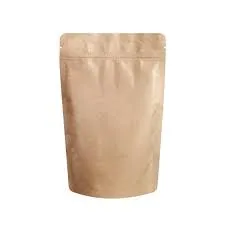- Afrikaans
- Albanian
- Amharic
- Arabic
- Armenian
- Azerbaijani
- Basque
- Belarusian
- Bengali
- Bosnian
- Bulgarian
- Catalan
- Cebuano
- chinese_simplified
- chinese_traditional
- Corsican
- Croatian
- Czech
- Danish
- Dutch
- English
- Esperanto
- Estonian
- Finnish
- French
- Frisian
- Galician
- Georgian
- German
- Greek
- Gujarati
- haitian_creole
- hausa
- hawaiian
- Hebrew
- Hindi
- Miao
- Hungarian
- Icelandic
- igbo
- Indonesian
- irish
- Italian
- Japanese
- Javanese
- Kannada
- kazakh
- Khmer
- Rwandese
- Korean
- Kurdish
- Kyrgyz
- Lao
- Latin
- Latvian
- Lithuanian
- Luxembourgish
- Macedonian
- Malgashi
- Malay
- Malayalam
- Maltese
- Maori
- Marathi
- Mongolian
- Myanmar
- Nepali
- Norwegian
- Norwegian
- Occitan
- Pashto
- Persian
- Polish
- Portuguese
- Punjabi
- Romanian
- Russian
- Samoan
- scottish-gaelic
- Serbian
- Sesotho
- Shona
- Sindhi
- Sinhala
- Slovak
- Slovenian
- Somali
- Spanish
- Sundanese
- Swahili
- Swedish
- Tagalog
- Tajik
- Tamil
- Tatar
- Telugu
- Thai
- Turkish
- Turkmen
- Ukrainian
- Urdu
- Uighur
- Uzbek
- Vietnamese
- Welsh
- Bantu
- Yiddish
- Yoruba
- Zulu
Choosing the Right Desiccant Pack for Effective Moisture Control in Packaging
The Importance of Desiccant Packages Keeping Products Fresh and Safe
In today's fast-paced world, the preservation of product quality is paramount for manufacturers and consumers alike. One of the critical components in ensuring that products remain unspoiled during storage and transport is the use of desiccant packages. These small but mighty packets play a significant role in controlling moisture levels, thereby protecting various items from damage, mold, and degradation.
Desiccants are substances that absorb moisture from the environment. Common desiccants include silica gel, activated clay, and molecular sieves, each designed to prevent the negative effects of humidity. When products such as electronics, pharmaceuticals, and food items are packaged, exposure to moisture can lead to several issues, including corrosion, spoilage, and reduced shelf life. This is where desiccant packages come into play.
Silica gel, one of the most widely used desiccants, is often found in small packets within the packaging of various products. Despite being inert and non-toxic, it is essential to inform consumers that these packets are not edible. The primary function of silica gel packets is to maintain low humidity levels within the packaging. By controlling moisture, silica gel prevents damage to sensitive components like circuit boards in electronics, preserving their integrity and functionality.
In the pharmaceutical industry, moisture control is critical. Many medications are sensitive to humidity, which can lead to degradation and loss of efficacy. Desiccant packages are essential in ensuring that medications remain stable and effective throughout their shelf life. The use of desiccants in pharmaceutical packaging not only protects the product but also helps meet regulatory requirements related to product stability and safety.
desiccant package

In the food industry, the role of desiccants is equally crucial. Many food products, particularly dehydrated goods or items that require a long shelf life, benefit significantly from moisture control. Desiccant packages help maintain the crispness of snacks, prevent the caking of powdered ingredients, and inhibit the growth of mold and bacteria in packaged goods. This extends the shelf life and ensures that consumers receive the best quality products when they purchase them.
Beyond their applications in specific industries, desiccant packages also play a role in sustainability. By reducing spoilage and waste, companies can minimize their environmental impact. Moreover, with the rise of eco-friendly packaging solutions, there is a growing focus on using biodegradable or recyclable desiccant materials, allowing companies to maintain product integrity while adhering to better environmental practices.
The proper use and disposal of desiccant packages are also worth noting. Consumers should be advised on how to handle these packets to avoid accidental ingestion, particularly in households with children or pets. Furthermore, after use, it’s important to dispose of them correctly, considering their environmental implications.
In conclusion, desiccant packages are small yet vital components in the protection and preservation of various products across industries. Their ability to control moisture effectively enhances product quality, prolongs shelf life, and ensures safety for consumers. As industries continue to innovate and prioritize sustainability, the role of desiccants will likely expand, leading to even more efficient and environmentally friendly solutions in packaging. Whether it’s ensuring your electronics work perfectly or your food remains delicious, desiccant packages are an unsung hero in the world of product preservation.













